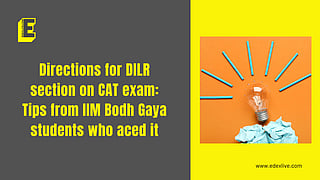
DILR — Data Interpretation and Logical Reasoning — this section of the CAT is often considered one of the most challenging sections. Here are a few tips from the candidates who have aced the section.
The Data Interpretation & Logical Reasoning (DILR) section of the Common Admission Test (CAT) is unique because it cannot be mastered through coaching alone. My experience with DILR taught me that this section requires a natural instinct for problem-solving and an ability to interpret data in various forms. The only way to excel in DILR is through extensive practice, which helps familiarise oneself with different problems and enhances one’s ability to approach them effectively.
One of the key aspects of doing well in this section is strategic question selection. Given the challenging nature of the DILR sets, solving just two out of four sets accurately can be enough to score a 99 percentile. Personally, I relied on my instincts, choosing questions that seemed approachable based on my preparation. With a combination of focused practice and a bit of luck, DILR became one of the most rewarding sections for me.
First, I focused on thoroughly understanding seating arrangement concepts, as I believe this forms the foundation of the entire section. Once I was confident with this topic, I moved on to practicing data interpretation, particularly cases. To improve in this section, I dedicated one hour daily to solving three sets. Initially, it might be difficult to solve many sets, but with consistent practice, you’ll start to see significant improvement.
Typically, it takes about three to four months to fully prepare for DILR, though it can be done in one to two months if you’re already comfortable with seating arrangements. With the right approach and persistence, DILR can be tackled well.
